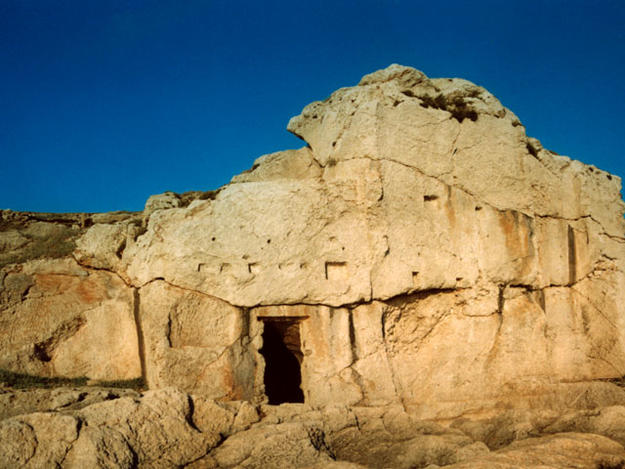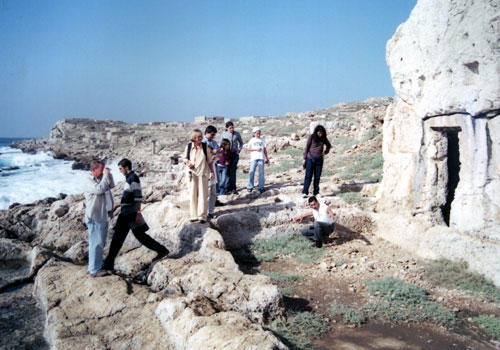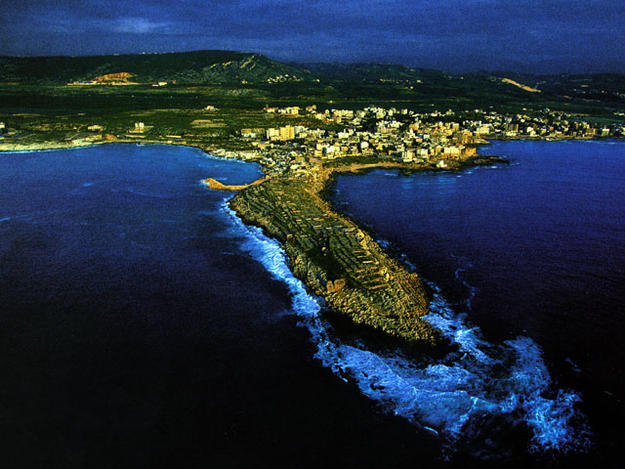1998, 2000 and 2002 World Monuments Watch
Located along a 400-meter-long peninsula near Tripoli, the archaeological site of Enfeh was an ancient coastal town, once used by Phoenicians as a shipyard. Enfeh reveals remains from at least 3,000 years of human occupation. Phoenician and Roman walls, wine presses, mosaic floors, and two seventh-century chapels have been found at the site.
In 1998, Enfeh was included on the World Monuments Watch to raise awareness about the impact that the expansion of the nearby port might have on the site. Following inclusion on the Watch, the Lebanese government shifted expansion of the port to the southern part of the peninsula, therefore removing the most immediate threat to the site. However, the preliminary works that had already been carried out resulted in the loss of several sections of the Roman wall; a medieval trench had been used as a thoroughfare for construction trucks, and the site had suffered from illegal excavation and looting. In order to raise awareness about these issues, Enfeh was included on the World Monuments Watch again in 2000 and 2002.
Since the Watch
In the years following the 2002 Watch, local advocates worked to increase public awareness about the historical significance of Enfeh in order to deter illegal construction and littering among the ruins. Additionally, residents of the area restored several eighteenth- and nineteenth-century houses in the nearby town to encourage the development of heritage tourism. Land and maritime excavations and ethnographic research projects have helped promote the conservation of Enfeh as an asset for sustainable development. In 2011, the Department of Archaeology and Museology at the University of Balamand undertook a rescue campaign of the chapel of Saydet El Rih. In 2013, the Honor Frost Foundation funded an underwater archaeology project that resulted in the production of a short documentary.



